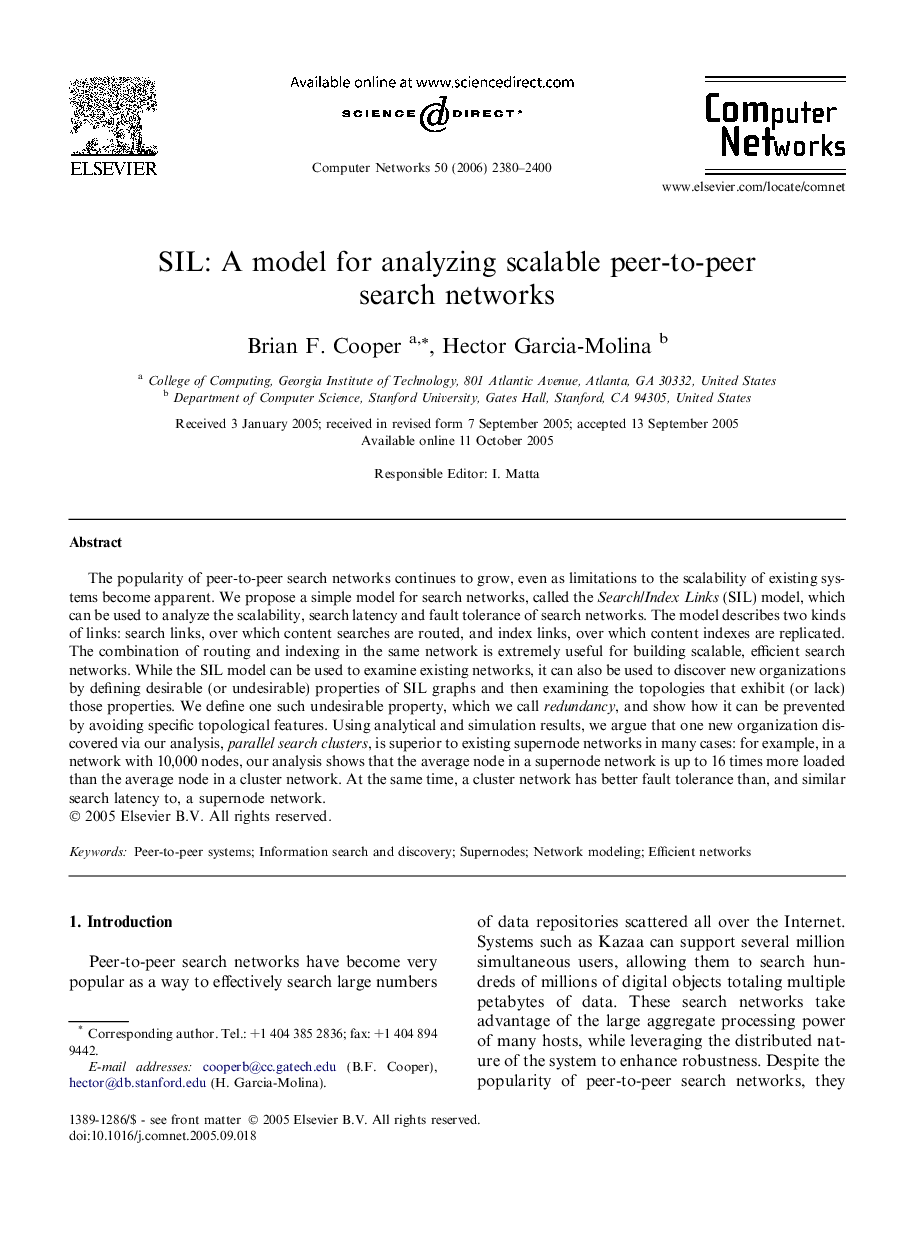| کد مقاله | کد نشریه | سال انتشار | مقاله انگلیسی | نسخه تمام متن |
|---|---|---|---|---|
| 452755 | 694591 | 2006 | 21 صفحه PDF | دانلود رایگان |

The popularity of peer-to-peer search networks continues to grow, even as limitations to the scalability of existing systems become apparent. We propose a simple model for search networks, called the Search/Index Links (SIL) model, which can be used to analyze the scalability, search latency and fault tolerance of search networks. The model describes two kinds of links: search links, over which content searches are routed, and index links, over which content indexes are replicated. The combination of routing and indexing in the same network is extremely useful for building scalable, efficient search networks. While the SIL model can be used to examine existing networks, it can also be used to discover new organizations by defining desirable (or undesirable) properties of SIL graphs and then examining the topologies that exhibit (or lack) those properties. We define one such undesirable property, which we call redundancy, and show how it can be prevented by avoiding specific topological features. Using analytical and simulation results, we argue that one new organization discovered via our analysis, parallel search clusters, is superior to existing supernode networks in many cases: for example, in a network with 10,000 nodes, our analysis shows that the average node in a supernode network is up to 16 times more loaded than the average node in a cluster network. At the same time, a cluster network has better fault tolerance than, and similar search latency to, a supernode network.
Journal: Computer Networks - Volume 50, Issue 13, 15 September 2006, Pages 2380–2400